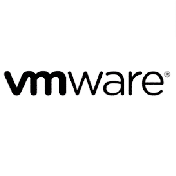Seminarinhalt
Entdecken Sie, wie Sie mit OmniStudio-Tools ansprechende, digital geführte Erlebnisse entwickeln können. In diesem Training zeigen Ihnen unsere OmniStudio-Experten, wie Sie FlexCards, OmniScripts und die OmniStudio Interaction Console verwenden, um Anwendungen zu konfigurieren, die das Benutzererlebnis verbessern.
Sie lernen, wie Sie mit deklarativen OmniStudio-Datenwerkzeugen interne und externe Daten abrufen und umwandeln können, um eine 360-Grad-Sicht auf Kundenkonten zu erhalten, die es Ihnen ermöglicht, schnell qualitativ hochwertige, verbraucherfreundliche Erfahrungen zu liefern, die Ihre Benutzer erwarten.
Nach Abschluss dieses Kurses werden Sie in der Lage sein:
- FlexCards erstellen und eine OmniStudio Interaction Console aufbauen, um die Kundenerfahrung zu verbessern.
- OmniScripts erstellen, um eine produktive, konsistente Benutzerinteraktion zu gewährleisten.
- Verwenden Sie Integrationsprozeduren, um komplexe Operationen auf dem Server auszuführen und externe Datenquellen einzubinden.
- Erstellen und ändern Sie DataRaptors, um Daten aus Salesforce abzurufen, Daten umzuwandeln und in Salesforce zu speichern.
- Erstellen Sie Berechnungsmatrizen und Berechnungsprozeduren, um Datenabfragen und Berechnungen auszuführen.
Programm
Introduction to Industry 360 & OmniStudio
- Define Industry 360
- Define OmniStudio
- Utilize OmniStudio for Industry 360 Solutions
- Examine OmniStudio’s Data Model and Architecture
- Define Business Rules Engine (BRE)
- Review Lookup Tables
- Understand Expression Sets
- Review Decision Explainer
- Define Document Generation (Doc Gen)
- Review Client-Side Processing
- Review Server-Side Processing
- Define Intelligent Form Reader
- Define Data Processing Engine
- Define OmniStudio Components: FlexCards, OmniScripts, DataRaptors, and Integration Procedures
- Examine Component Types
- Review Component Best Practices
- Navigate Component Designers
- Examine a FlexCard for Industry 360 Use Case
- Implement Different FlexCards in an Industry 360 Solution
- Define Parent and Child FlexCards
- Examine Parent and Child FlexCard Relationships
- Examine Parent and Child FlexCard Data Sources
- Build and Style a Child FlexCard
- Create FlexCard States
- Embed a Child FlexCard in a Parent Card
- Build an Industry 360 Lightning Application to Deploy FlexCards
- Examine a Problem Reporting Use Case
- Design a Problem Reporting Solution
- Build a DataRaptor to Display Asset and Account Data
- Create a Simple OmniScript to Capture Case Data
- Configure a File Upload Element
- Create a Type Ahead Block
- Refine the OmniScript User Experience
- Create a Branching Integration Procedure
- Test and Deploy the OmniScript Using a FlexCard
- Examine a Customer Onboarding Use Case
- Examine and Complete an In-Progress OmniScript
- Configure Conditional Views
- Configure a Repeating Block
- Configure Text Blocks
- Configure Error Checking
- Create an Integration Procedure with a Loop Block and DataRaptor Transform
- Create a Confirmation Step with a Lookup Element and Embedded FlexCard
- Use OmniScript’s JSON to Create a DataRaptor Load
- Deploy the OmniScript on an Application Home Page
- Discuss Product and Program Eligibility Use Cases
- Examine a Service Level Agreement (SLA) Use Case
- Build a SLA OmniScript
- Embed a FlexCard in the OmniScript
- Create Branching with a Set Values Element Expression Editor
- Calculate Discounted Pricing Using a Pre-Built Expression Set
- Configure a Disclosure Element
- Seed Data Using a Set Values Element
- Create an Opportunity Using a DataRaptor Load
- Deploy the OmniScript on a Record Detail Page
- Extend and Customize Standard OmniStudio Components
- Update FlexCards and Their Data Sources
- Update OmniScripts and Their Data Sources
- Import and Export Data Using DataPacks and MultiPacks
- Design an OmniStudio Solution Based on Specific Requirements
Zielgruppen
Dieses Training richtet sich an Plattformentwickler, UI-Entwickler, Lösungsarchitekten und technische Architekten, die für die Einrichtung, Konfiguration oder Wartung von OmniStudio-Anwendungen oder Salesforce Industry Cloud-Anwendungen verantwortlich sind.
Sie sollten über ein solides Verständnis grundlegender Salesforce-Konzepte und -Funktionen, einschließlich Lightning Web Components (LWC), sowie über Erfahrung im Umgang mit relationalen Datenbanken und Vertrautheit mit JSON verfügen.
Idealerweise verfügen Sie über die Berechtigung zum Salesforce Administrator oder Salesforce Platform Developer I. Dieses Training wird für alle empfohlen, die den Titel Salesforce Certified OmniStudio Developer erwerben möchten.
Sie sollten über ein solides Verständnis grundlegender Salesforce-Konzepte und -Funktionen, einschließlich Lightning Web Components (LWC), sowie über Erfahrung im Umgang mit relationalen Datenbanken und Vertrautheit mit JSON verfügen.
Idealerweise verfügen Sie über die Berechtigung zum Salesforce Administrator oder Salesforce Platform Developer I. Dieses Training wird für alle empfohlen, die den Titel Salesforce Certified OmniStudio Developer erwerben möchten.
Trainings zur Vorbereitung
Wichtige Information
Powered by K2 Partnering Solutions GmbH.


